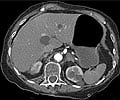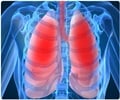A new study has indicated that smoking tobacco is bad, irrespective of whether it is taken in through a water pipe or by puffing on a cigarette.
A new study has indicated that smoking tobacco is bad, irrespective of whether it is taken in through a water pipe or by puffing on a cigarette. Both ways are lethal enough to trigger heart disease and nicotine addiction.
The belief among some waterpipe users is that this method of smoking tobacco delivers less tar and nicotine than regular cigarette smoking and has fewer adverse health effects.However, the new study led by a Virginia Commonwealth University researcher has challenged this belief.
"The results are important because they provide concrete, scientific evidence that contradicts the oft-repeated myth that waterpipe tobacco smoking does not involve users inhaling the same harmful chemicals that cigarette smokers do," said principal investigator Thomas Eissenberg, Ph.D., professor in the VCU Department of Psychology.
"We hope that these results will be used by physicians and public health officials to inform waterpipe tobacco smokers that they risk tobacco-induced nicotine addiction and cardiovascular disease," he added.
Eissenberg along with Alan Shihadeh, Sc.D., associate professor at the American University of Beirut in Lebanon, compared the toxicant exposure associated with waterpipe smoking and cigarette smoking among 31 participants between the ages of 18 and 50.
Each participant completed two 45-minute sessions, one in which they smoked tobacco using a waterpipe and the other in which they smoked a single cigarette. The level of nicotine and carbon monoxide in the participants' blood was measured, as was heart rate, puff number and puff volume.
Advertisement
Specifically, the peak waterpipe COHb level - amount of carbon monoxide found bound to red blood cells - was three times that observed for cigarette.
Advertisement
Examining the number and volume of each puff showed that compared with smoking a cigarette, waterpipe tobacco smoking involved inhalation of about 48 times more smoke.
The study has been published in the December issue of the American Journal of Preventive Medicine.
Source-ANI
SAV















